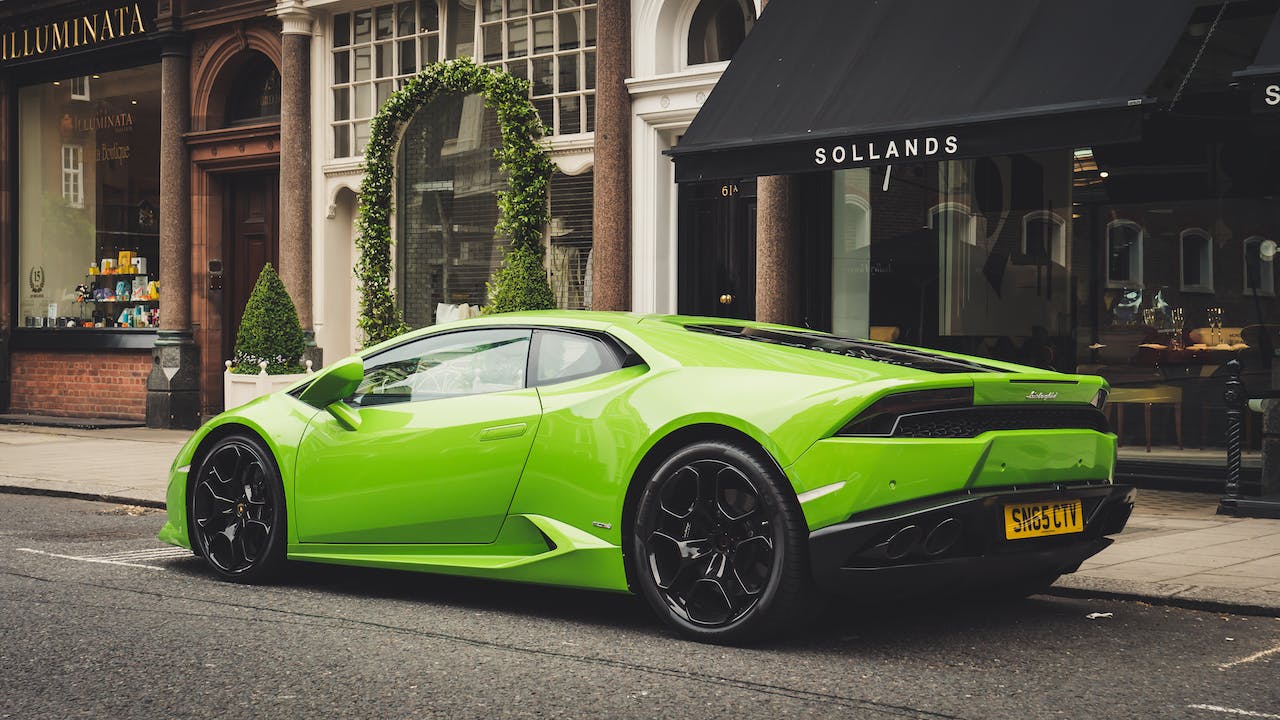In the realm of automotive aesthetics, the choice of car color is more than a surface-level decision; it’s a window into our preferences, personalities, and the cultural influences that shape our choices. This article takes a deep dive into the fascinating world of the psychology of car colors, exploring the impact of popular choices, color trends in design, and the personalization and cultural nuances that drive our color preferences.
Popular Car Colors and Their Psychological Impact
When it comes to car colors, certain shades have an enduring popularity that transcends trends. Black, white, silver, and shades of grey are not just arbitrary choices; they carry psychological associations that influence our perceptions. Black, often associated with sophistication and power, appeals to those seeking a touch of luxury. White signifies purity and simplicity, evoking a timeless elegance. Silver, with its modern and high-tech connotations, appeals to those embracing the future.
Understanding these psychological impacts is crucial for car enthusiasts, as it allows them to align their vehicle choices with their desired image and lifestyle. Whether it’s the sporty red evoking passion or the calming blue inducing a sense of tranquility, every color on the spectrum has a unique psychological resonance.
Color Trends in Automotive Design
The automotive industry is not immune to the ebb and flow of design trends. Recent years have witnessed a departure from the traditional dominance of neutral tones. Bold and vibrant colors are making a comeback, challenging the status quo and reflecting a shift in consumer preferences.
Car manufacturers are increasingly leveraging color psychology to connect with consumers on an emotional level. Warm tones like orange and yellow convey a sense of energy and optimism, while cool tones like greens and blues evoke feelings of calm and eco-friendliness. Staying abreast of these color trends ensures that car enthusiasts can make choices that not only align with their personal taste but also resonate with the current design zeitgeist.
Personalization and Cultural Influences on Color Choices
In an era where individuality is celebrated, the ability to personalize one’s vehicle extends to the choice of color. Car manufacturers are offering an array of customization options, allowing buyers to create a vehicle that is an extension of their personality.
Cultural influences also play a significant role in shaping color preferences. In some cultures, specific colors may carry symbolic meaning or be associated with traditional beliefs. Understanding these cultural nuances adds depth to the decision-making process, allowing individuals to make choices that not only reflect personal taste but also align with cultural sensibilities.
The Emotional Connections with Car Colors
Beyond aesthetics, car colors have the power to evoke emotions and create lasting connections. For many, the choice of color is an emotional one, tied to memories, experiences, and even aspirations. Driving a car in a preferred color can enhance the overall driving experience, creating a sense of joy and satisfaction.
Understanding the emotional connections with car colors allows enthusiasts to make choices that go beyond mere aesthetics. It’s about choosing a color that resonates with the individual on a personal level, creating a harmonious relationship between the driver and their vehicle.
Impact on Resale Value
While personal preferences often dictate the choice of car color, practical considerations come into play when thinking about resale value. Neutral colors like black, white, and silver tend to have broader appeal in the used car market, potentially maximizing resale value.
However, this doesn’t mean enthusiasts should shy away from more unique or bold colors. In some cases, a distinctive color can make a vehicle stand out and attract a niche market, positively impacting resale value. Striking the right balance between personal preference and resale considerations is key for those looking to make a savvy color choice.
Innovations in Automotive Color Technologies
Advancements in technology are not limited to engine performance and safety features; they also extend to color technologies in the automotive industry. From advanced paint formulations to smart coatings that change color based on environmental conditions, the possibilities are expanding.
Enthusiasts intrigued by the intersection of technology and aesthetics can explore these innovations to find vehicles that not only look good but also incorporate cutting-edge color technologies. Staying informed about these advancements ensures that car lovers can embrace the future of automotive design.
The Role of Marketing in Shaping Preferences
The influence of marketing on consumer choices cannot be overstated, and the automotive industry is no exception. Marketing campaigns often play a pivotal role in shaping color preferences, associating certain colors with specific attributes or lifestyles.
Car enthusiasts keen on staying ahead of color trends should pay attention to marketing narratives. From sleek and sophisticated to adventurous and bold, the messages conveyed in marketing materials can provide insights into the broader cultural and societal perceptions of specific colors.
Sustainability and Eco-Friendly Color Choices
As environmental consciousness grows, so does the demand for eco-friendly color choices in the automotive industry. Enthusiasts concerned about their ecological footprint can explore colors that are produced using sustainable practices and materials.
Eco-friendly colors often incorporate natural pigments and environmentally responsible production processes. Choosing these colors not only aligns with a commitment to sustainability but also reflects a broader shift towards environmentally conscious consumer behavior.
Future Trends in Car Colors
The future of car colors holds exciting possibilities, driven by technological advancements, societal shifts, and evolving design philosophies. Enthusiasts intrigued by what lies ahead can anticipate color trends that embrace innovation, sustainability, and a harmonious blend of aesthetics and functionality.
From the integration of smart materials that change color on command to the use of biodegradable pigments, the future promises a diverse and dynamic color palette. Staying attuned to these emerging trends ensures that car enthusiasts can be early adopters of the next wave of automotive design.
Tips for Choosing the Right Car Color
With the myriad of choices available, selecting the right car color can be a daunting task. Here are some practical tips to guide enthusiasts through the decision-making process:
- Consider Your Lifestyle: If you lead an active lifestyle, a vibrant and energetic color might be a good fit. For a more laid-back lifestyle, calming and neutral tones could be ideal.
- Resale Value: While personal preference is crucial, it’s wise to consider the potential impact on resale value. Neutral colors generally have a broader appeal.
- Cultural Sensitivity: If cultural influences play a significant role in your life, choose a color that aligns with those influences. This adds a meaningful layer to your choice.
- Emotional Connection: Don’t underestimate the power of emotion. Choose a color that resonates with you on a personal level, evoking positive emotions and connections.
- Stay Informed: Keep abreast of color trends, innovations, and societal shifts. Being informed allows you to make choices that are not only current but also future-proof.
Case Studies: Notable Examples of Car Colors
Certain cars have become synonymous with specific colors, contributing to the iconic status of both the vehicle and its chosen hue. Let’s explore a few notable examples:
- Ferrari Red: The vibrant red synonymous with Ferrari reflects the brand’s passion for performance. It has become an iconic color, symbolizing speed and luxury.
- Volkswagen Beetle’s Pastels: The retro Volkswagen Beetle often flaunted pastel colors, contributing to its playful and nostalgic appeal.
- Tesla’s Futuristic Metallics: Tesla’s futuristic designs are often complemented by metallic colors, reinforcing the brand’s commitment to innovation.
These case studies highlight how color choices can become an integral part of a car’s identity, influencing brand perception and consumer preferences.
Addressing Common Misconceptions About Car Colors
In the world of car colors, myths and misconceptions abound. Let’s debunk some common beliefs:
- Myth: Red Cars Get More Tickets: There is no conclusive evidence linking the color of a car to the likelihood of receiving traffic tickets.
- Myth: White Cars Are Cooler in Hot Weather: While white cars may reflect more sunlight, the difference in interior temperature is marginal.
- Myth: Neutral Colors Are Boring: Neutral colors like black, white, and grey can be sophisticated and timeless, appealing to a broad range of tastes.
- Myth: Bright Colors Are Less Safe: The safety of a car is not determined by its color. It depends on factors such as design, technology, and adherence to safety standards.
- Myth: Color Doesn’t Affect Resale Value: While individual preferences vary, neutral colors generally have broader market appeal, impacting resale value.
Separating fact from fiction allows enthusiasts to make informed decisions, free from the constraints of common misconceptions.
Conclusion
In the colorful universe of automotive psychology, the choice of car color is a deeply personal and meaningful decision. It goes beyond aesthetics, reflecting our personalities, emotions, and the cultural tapestry that shapes our lives. Whether you opt for the timeless elegance of black, the purity of white, or the vibrancy of a custom hue, the psychology of car colors invites you to explore the intersection of art, emotion, and individuality.
As you embark on your journey to find the perfect hue for your vehicle, remember that the canvas is yours to paint. Consider the psychological impact, stay attuned to trends, and let your choice be an expression of your unique identity.
Frequently Asked Questions
Q: Do certain car colors attract more attention on the road?
A: While bright and bold colors may stand out, the level of attention depends on various factors. Safety features, car design, and driving behavior also play significant roles.
Q: Are there specific colors associated with better fuel efficiency or performance?
A: No, car color does not affect fuel efficiency or performance. These factors are determined by the vehicle’s design, engine, and aerodynamics.
Q: Do luxury car brands follow specific color trends?
A: Luxury car brands often set their color trends, emphasizing sophistication and exclusivity. However, individual preferences within these brands can vary.
Q: Can I change the color of my car after purchase?
A: Yes, car color can be changed through professional repainting. However, it’s essential to consider the cost, impact on resale value, and the expertise of the painter.
Q: How do I maintain the color of my car to ensure longevity?
A: Regular washing, waxing, and protecting your car from harsh weather conditions can help maintain the color and overall appearance. Following the manufacturer’s care recommendations is crucial.
Last Updated on December 8, 2023 by admin

Mac is an Automotive enthusiast. He owns up to 15 vehicles. He deals with Auto problems and shows his skill to Car owners who are seeking any type of Car help.





